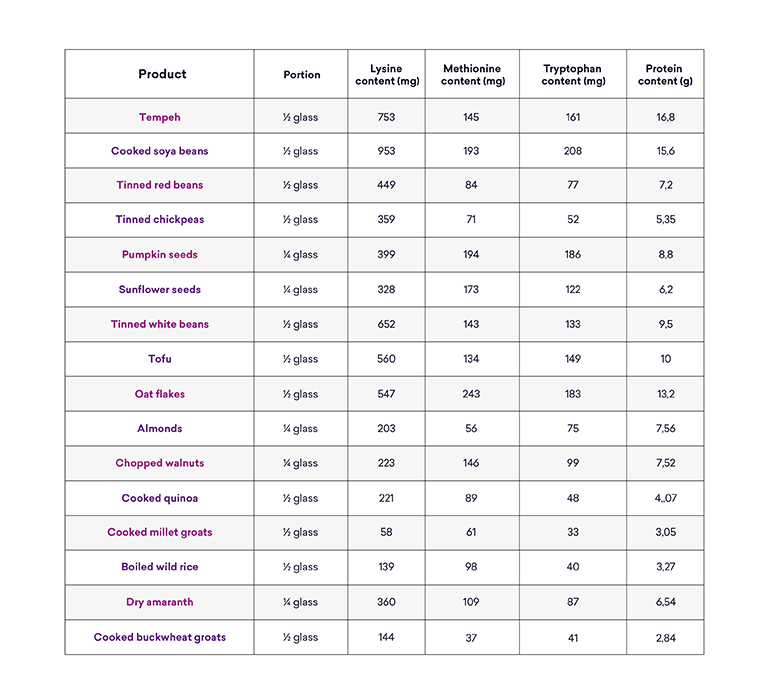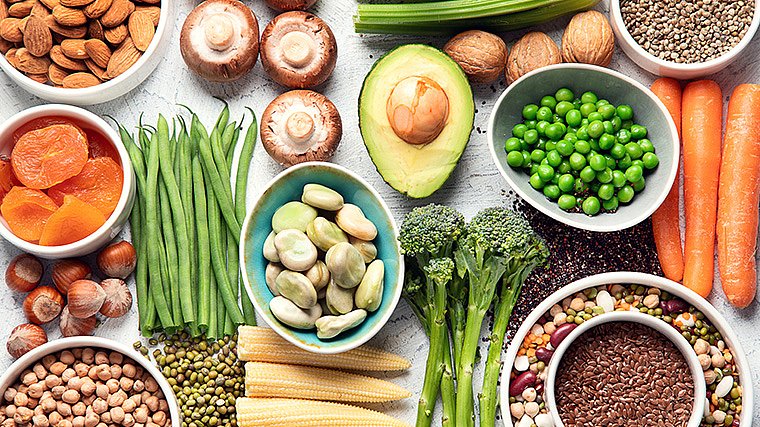Role of protein in the body
Protein is a key component of everyone’s diet. It performs a number of functions in the body. Among other things, it is one of the building blocks of all body tissues. Protein is essential for the development and growth of young organisms. It is involved in many enzyme systems, taking part in the regulation of metabolic processes. In addition, it has transport functions and is involved in cellular immunity processes and regeneration of damaged tissues.
Although the main source of protein in traditional diets is meat, well-planned plant-based diets also meet the demand for this macronutrient, providing all the necessary amino acids. Types of vegetarian diet that allow the consumption of dairy products and eggs usually provide an adequate supply of complete protein throughout the day. In vegans, providing this macronutrient is more difficult, but not impossible! It only requires adequate knowledge of how to optimally select food products.
Plant protein versus animal protein
The nutritional value of proteins depends on the content and mutual proportions of essential amino acids, as well as their digestibility. Exogenous amino acids are those that cannot be synthesised in the body and must be supplied with food every day. These include phenylalanine, isoleucine, lysine, methionine, tryptophan, valine, leucine and threonine. The exogenous amino acid that is present in the product in the lowest amount relative to the reference protein (egg white) is called the limiting amino acid.
Animal protein (meat, eggs, poultry, fish and dairy products) is classified as a highly nutritious protein. It contains all essential amino acids in proportions that allow for their maximum utilisation in body protein synthesis. Egg white is considered to be the protein with the highest nutritional value, as its amino acid composition is most similar to that of body proteins. They are referred to as reference proteins.
Plant proteins do not always contain the right amount of essential amino acids. Of these proteins, legume seed protein, particularly soya, has the highest nutritional value. Legumes are characterised by their high content of this macronutrient (21-25 percent) and are the primary source of lysine in plant-based diets.

The best plant-based protein sources
Although animal products are the best source of protein, by consuming only plant-based products we are also able to supply all exogenous amino acids. By varying the foods we consume and combining them in the right way, we can replenish missing amino acids and create a balanced meal that contains a complete set of amino acids. For example, cereal products that are poor in lysine (e.g. millet groats) should be combined with legume seeds, which are a rich source of this amino acid. Products from different groups do not have to be consumed in one meal, it is sufficient to provide them in one day.
Summary
A vegetarian or vegan diet does not have to be deficient in protein! When properly balanced, it allows the acquisition of all essential amino acids, and will therefore also be suitable for strength-training individuals. However, we need to carefully define what to eat and what products to combine with each other. As well as providing the right amount of protein, this way of eating often encourages people to expand their culinary horizons.
Bibliography:
- Raport Roślinniejemy: Postawy Wobec Diet Roślinnych W Kontekście Zdrowia I Aktywności Fizycznej; 2022
- American Dietetic Association; Dietitians of Canada. Position of the American Dietetic Association and Dietitians of Canada: Vegetarian diets. J Am Diet Assoc 2003;103(6):748-65
- https://www.eatrightpro.org/-/media/eatrightpro-files/practice/position-and-practice-papers/position-papers/vegetarian-diet.pdf
- Chart - based on USDA (28.04.2022)
